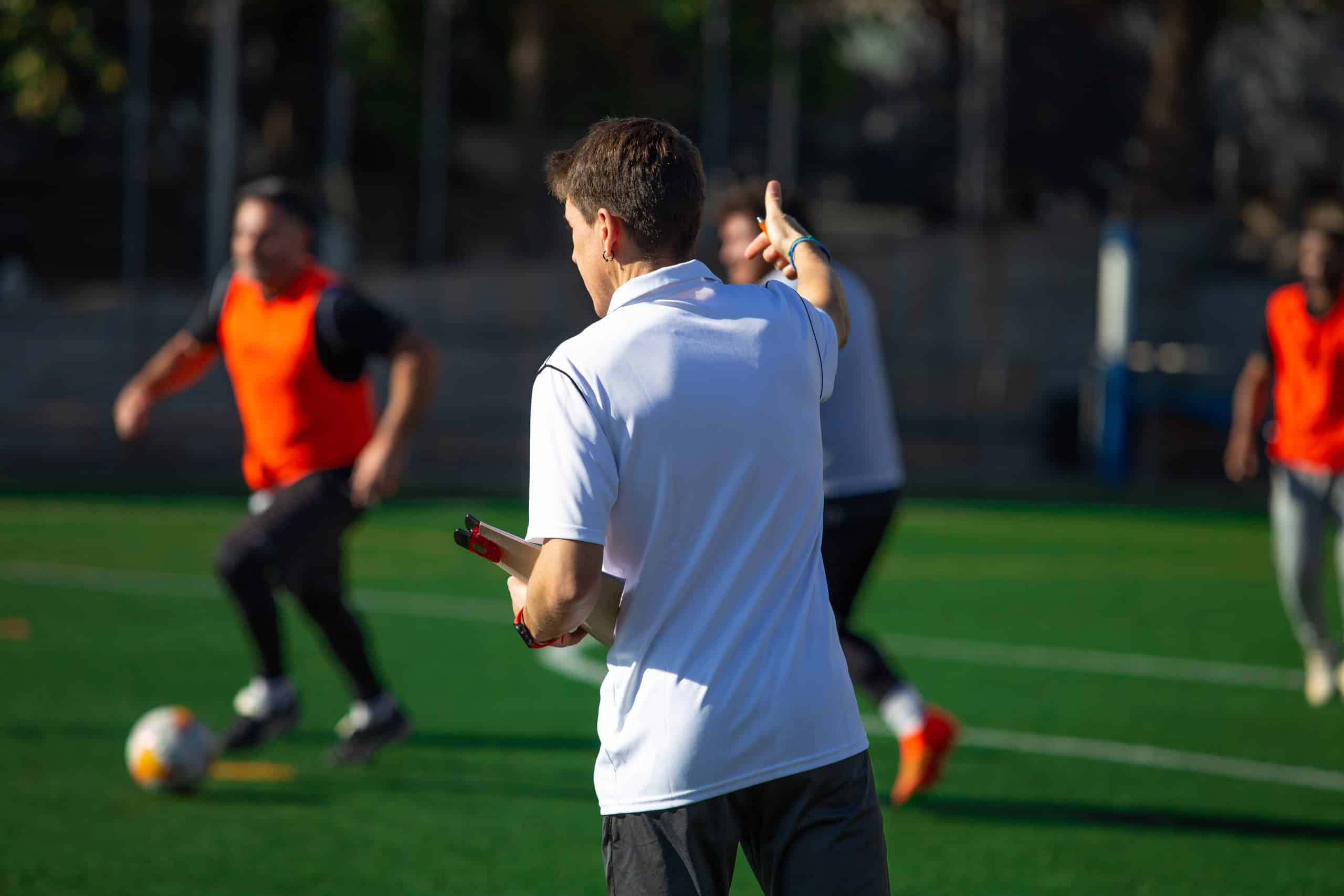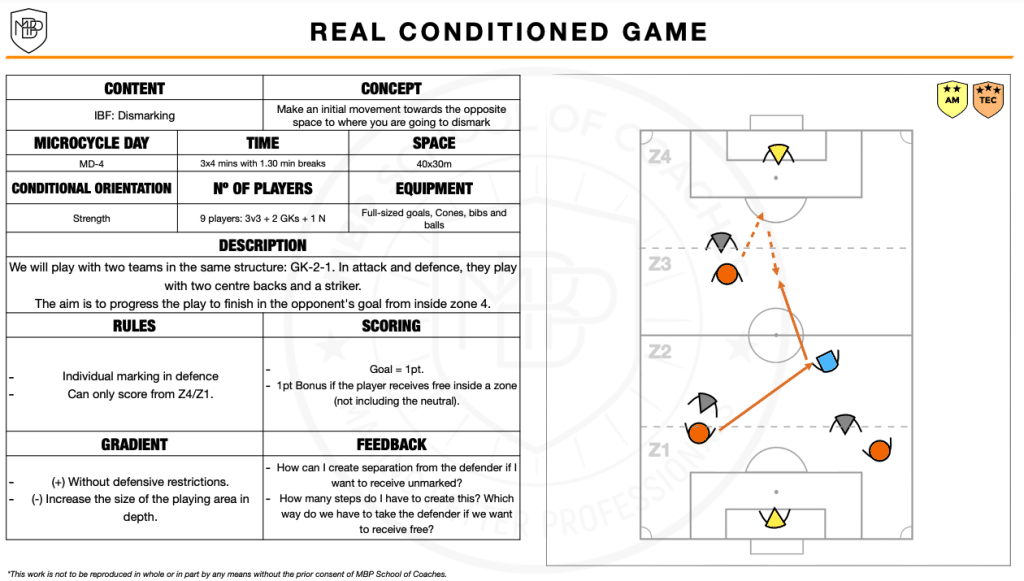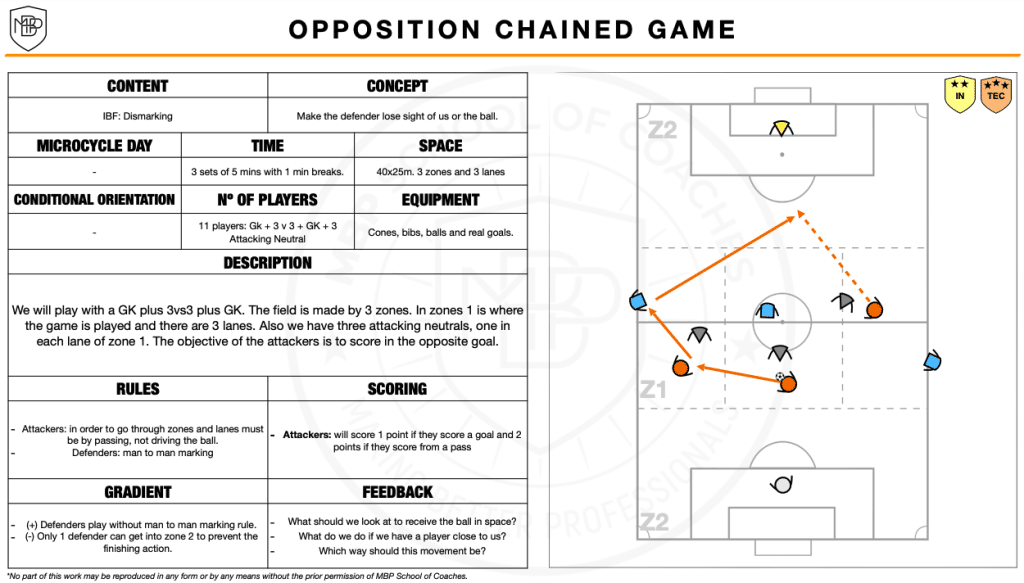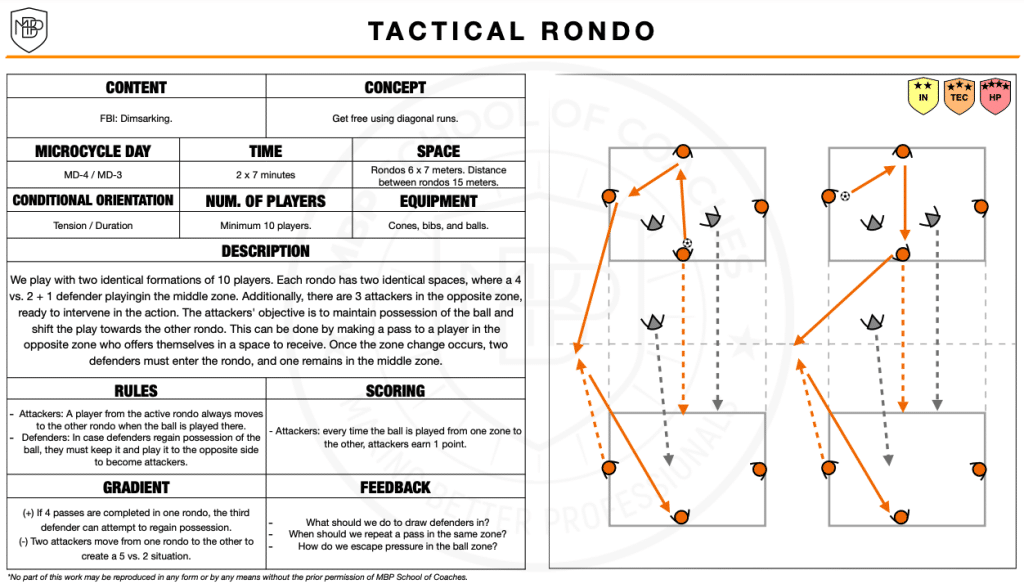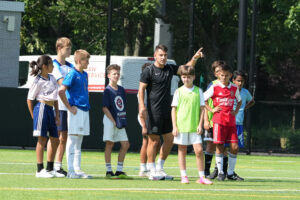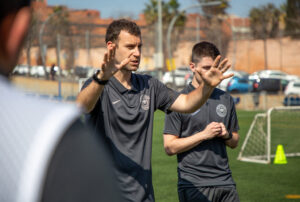How good are you at designing training tasks? In this blog, we’ll show you some examples of how to train dismarking in your players.
Tarea 1. This first task focuses on improving the movement prior to dismarking, i.e. the player makes a movement to the opposite space to where he/she wants to run into. It is ideal for use this in the initiation period, within the main phase of the session.
To do this, a real conditioned game of 4v4 + 1 attacking neutral is used, with the rule for the defending players to mark the attackers individually (man-mark), with the aim that they have to dismark in order to receive the ball. With this, the feedback given by the coach will revolve around the main concept, i.e. that the players realise that they must make an initial movement towards the opposing space where they finally want to receive the ball.
Task 2. The second task, also about dismarking, is recommended for both the initiation and technification periods, in the main phase of the session. On this occasion, the aim is for the attacker to perform the movement when the defender loses sight of them.
The didactic strategy chosen is a chained opposition game, starting with a possession in the middle of the pitch (zone 1) – from where they can only exit through a pass – transforming the play into a game once they manage to progress past the intermediate zone. The reason why so many neutrals are used is so that there are many passing options and, consequently, dismarking actions by the attackers without the ball. Therefore, the focus is on when to make the dismarking, rather than how and where.
Task 3. Continuing with the same content, this third task follows the format of a rondo and, therefore, is especially recommended for use in the activation phase of the technification or high-performance period. The concept changes with respect to the previous tasks, and on this occasion, it refers to the diagonal trajectory of the movement. In other words, it focuses on the how.
The three attackers who are waiting in the other space can appear to receive a pass from a teammate in the rondo where the ball is. With this, it is very important that the defenders make it as difficult as possible for the ball to move from one rondo to the other, so that the attackers without the ball can focus on the trajectory of their dismarking.
In conclusion, dismarking is a tactical content that can be trained in any period (initiation, technification and high performance). However, the concept should be adapted to the level of game understanding of the players, as well as the didactic strategy used, which will determine the phase of the session in which this content can be trained.

